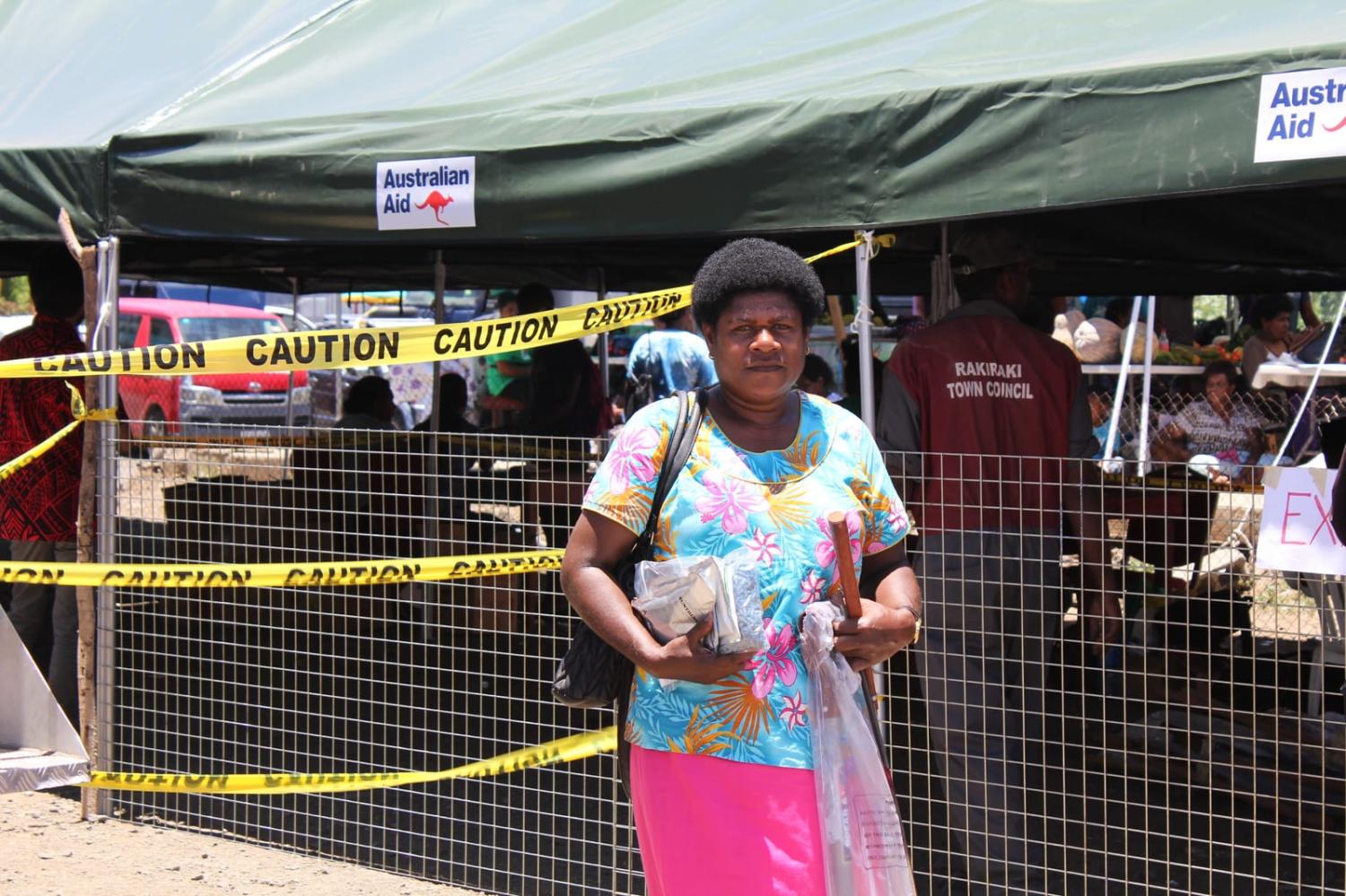Last year, I shared Samoan Prime Minister Fiame Naomi Mata’afa’s call to action on gender equality. In her keynote address to the first Pacific Islands Forum Women Leaders Meeting (PIFWLM), Fiame Mata’afa said leaders must “move beyond rhetoric” and get working on real action to advance women and girls, without leaving anyone behind. Resources, she added in her address this year to the Lowy Institute, are part of the problem, but so too are complex cultural, political, and social environments making Pacific women’s advancement more challenging.
Let’s start with the rhetoric.
Australia – the Pacific’s most significant development partner – considers itself “committed to being a global leader on gender equality”. This position is defined in both Australia’s new international development policy, putting gender equality at its core, and the new International Gender Equality Strategy to be released soon. This strategy, says Australia’s Department of Foreign Affairs and Trade (DFAT), “will recognise gender equality as central to Australia’s foreign policy, international development, humanitarian action, trade and security efforts”.
Australia is talking the talk. But do Australia’s promises match its actions, as Fiame asked leaders to do?
In 2021–22, Australia spent more than $1.5 billion in Official Development Assistance on gender equality investments – a substantial figure. But dollar amounts alone don’t speak to the effectiveness of implementation. Was this the right amount of aid money to help shift the dial on this issue – one of the most challenging to transform in the Pacific? Judgements take time. Recent evaluations of a DFAT-led, ten-year, $320 million regional gender equality program show little transformation on key indicators, proving how difficult it is to get traction on this issue in the region, even over the long term.
Partly responding to the issue of effectiveness, DFAT has reinstated a target aiming for 80 per cent of development investments to perform effectively on gender equality in implementation. DFAT development investments valued at more than $3 million must also have a gender equality objective. It means there will likely be a lot more financing for women’s empowerment coming the Pacific’s way, but again, how effectiveness is measured in those targets will be key to ensuring transformation over the long term.
Australia’s big spend on women’s advancement isn’t a sudden development. This year, Lowy Institute researchers used Pacific Aid Map data and other sources to examine the financing for gender equality initiatives between 2008 and 2020 from all donors to Pacific Island nations. The aim was to identify which donors matched their talk with their walk when it comes to gender equality. Having a clearer understanding of how much and where Pacific women’s financing is going will help donors allocate future funds more effectively and efficiently.
We found that Australia’s contribution to gender equality across those years was consistent and substantial. Its total financial contribution to Pacific gender programs in 2008 was $277 million. In 2020, it was $336 million, and over the 13 years it totalled nearly $5.5 billion. As evidenced in the chart below, Australia’s contribution to Pacific women’s advancement dwarfs all other major development partners to the region.
Australia’s massive investment into women’s advancement, when compared to other donors, is an important feature of its development program. But it is crucial to also understand how much of this investment is allocated to projects with “significant” or “principal” gender equality objectives, as this tells a better story about aid priorities.
To cut through the aid speak, “significant” projects have gender equality as an important and deliberate objective, but it is not the principal reason for undertaking the project. “Principal” projects have gender equality as a top-level ambition, without which the project would not go ahead.
As the next chart shows, on average Australia spent five per cent of its total Pacific aid on “principal” projects and around a third on “significant” gender equality projects. Just how significant the gender equality objectives are ranges from project to project, and donor to donor. It means that lots of projects with significant objectives for women may not have as much impact as principal projects.
Australia’s proportion of aid allocated to gender equality generally aligns with most traditional donors around the world. Is this enough for DFAT? With a re-introduced performance target and policy commitment to advance the Pacific women’s agenda, it seems the answer is “no”. The imperative to do more is clearly driving Australia’s development agenda today.
But Fiame’s call to action is not just about resources and financing. Implementation of good development strategies – the action part – is just as important, because more money allocated to gender equality investments does not mean impact. Aid effectiveness must always be considered, alongside the priorities of recipient countries.
In 2021, Australia’s ten-year gender equality program Pacific Women Shaping Pacific Development ended. Now, the program is transitioning to Pacific Women Lead, alongside another new one – PNG Women Lead. These new programs will give more control to Pacific women, who will determine the programs’ design and outcomes. It may be the case that the programs’ indicators will be more reflective of what gender equality and transformation look like from a Pacific point of view.
As Australia focuses on listening to Pacific priorities, it must also heed Fiame Mata’afa’s call to move beyond the rhetoric. Actions are what’s needed now, and that includes giving more opportunities for Pacific women to determine what gender equality transformation looks like, and how it should be implemented in their communities.


